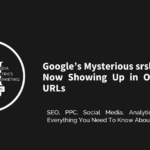A recent discussion between SEO expert Neil McCarthy and Google Search Advocate John Mueller has shed light on how Google interprets hreflang tags in international SEO strategies.
McCarthy noticed that web pages intended for French-speaking users in Belgium (fr-be) were appearing in search results from France. He questioned whether this was due to Google ignoring hreflang directives. In response, Mueller emphasized an important point: hreflang tags are treated as suggestions, not strict commands.
The Issue with Regional Targeting
In the example shared, Google explained that the page:
- Included the relevant search terms
- Was written in French
- “Appears coherent for this query, even though it typically serves audiences outside of France.”
This clarification revealed that Google’s systems may prioritize relevance and language over regional targeting when determining which page to display.
Google’s Stance on hreflang
Mueller clarified that hreflang does not guarantee all regional versions of a page will be indexed or shown separately. When multiple versions share the same language—like fr-fr (French-France) and fr-be (French-Belgium)—Google may treat them as duplicates and select one as the canonical URL.
He further explained:
“I suspect this is a ‘same language’ case where our systems just try to simplify things for sites. Often hreflang will still swap out the URL, but reporting will be on the canonical URL.”
Key Takeaways
- Hreflang Is a Signal, Not a Directive
- Google uses hreflang to understand which regional version should appear, but it doesn’t enforce separate indexing or visibility.
- Canonical Tags May Override Regional Variants
- If two pages have similar content in the same language, Google might choose one as canonical, consolidating indexing and analytics data.
- Same Language Content Gets Grouped
- Pages in the same language—even if intended for different regions—may be grouped under one canonical URL, affecting performance tracking.
What This Means for International SEO
To avoid having regional pages overlooked or merged by Google:
- Add unique content to each regional version tailored to local user needs.
- Check Google Search Console regularly to confirm which URLs Google treats as canonical.
- Test your site using location-based tools or VPNs to ensure the correct regional URLs appear.
- Review Google’s documentation on hreflang, sitemaps, and HTTP headers to optimize implementation.
Recommended Actions for Marketers
- Audit hreflang Implementation : Validate tag syntax, XML sitemap entries, and HTTP headers.
- Evaluate Page Uniqueness : Ensure each regional page offers distinct value to users.
- Monitor Performance Closely : Set up alerts for unusual traffic patterns or regional ranking issues.
Understanding the limitations of hreflang and combining it with strong canonicalization practices and unique regional content can help international SEO teams better control their global presence.









